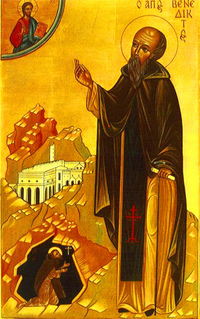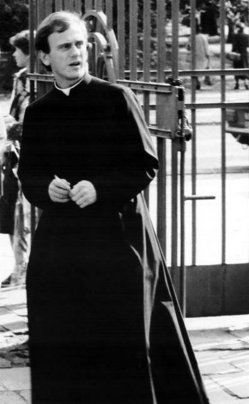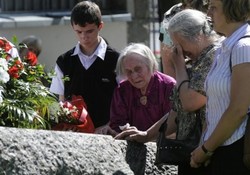 Merciful Lord, we welcome in joy the feast of Blessed
Merciful Lord, we welcome in joy the feast of Blessed
Diana and Blessed Cecilia. With the help of their prayers may devotion to truth
and love for our brothers and sisters fill our hearts and our lives.
Benedictines changing the way life is lived
- Saint Meinrad monks and colleagues speak about the Benedictine Way of Life and Slow Communication
- Today the Benedictine monks and administration of Kansas’ Benedictine College’s commitment to green living with a new building project.
Blessed Jerzy Popiełuszko, martyr
From Cyprus on Sunday, June 6, 2010, Pope Benedict XVI
during the Angelus address spoke a “few words in Polish on the happy occasion
of the beatification today of Jerzy Popieluszko, priest and martyr: [I send
cordial greetings to the Church in Poland which today rejoices at the elevation
to the altars of Father Jerzy Popieluszko. His zealous service and his
martyrdom are a special sign of the victory of good over evil. May his example
and his intercession nourish the zeal of priests and enkindle the faithful with
love.]”
June is the month dedicated to the Sacred Heart of Jesus
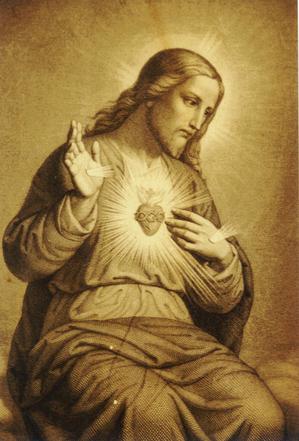 For a long time the Church has dedicated the month of June to the Sacred Heart of Jesus. The designation of the solemn feast of the Sacred Heart is on the Friday following the feast of Corpus Christi. This year the Sacred Heart feast is celebrated on June 11.
For a long time the Church has dedicated the month of June to the Sacred Heart of Jesus. The designation of the solemn feast of the Sacred Heart is on the Friday following the feast of Corpus Christi. This year the Sacred Heart feast is celebrated on June 11.
Dominicans of the Eastern Province begin their Chapter
 For nearly a month the Dominican friars of the Province of Saint Joseph (the Eastern Province) elected and/or appointed as capitulars will be at Providence College doing the normal business of governance and making a review (and coming to some decision) on how they live the charism given by Saint Dominic.
For nearly a month the Dominican friars of the Province of Saint Joseph (the Eastern Province) elected and/or appointed as capitulars will be at Providence College doing the normal business of governance and making a review (and coming to some decision) on how they live the charism given by Saint Dominic.
Corpus Christi procession at St Mary’s New Haven
 O sacred Banquet in which Christ is received, the memory of His Passion is recalled, the mind is filled with grace, and pledge of future glory is given to us.
O sacred Banquet in which Christ is received, the memory of His Passion is recalled, the mind is filled with grace, and pledge of future glory is given to us.
Saint Norbert of Xanten
Causing souls to flourish.
J. Michael Thompson
Copyright © 2010, World Library Publications
76 76 D, ST. KEVIN, AVE VIRGO VIRGINUM
Corpus Christi
 Of the glorious Body telling,
Of the glorious Body telling,
O my tongue, its mystery sing,
and the Blood, all price excelling,
which the Gentiles’ Lord and King,
in a noble womb once dwelling,
shed for this world’s ransoming.
Given for us, for us descending
of a Virgin to proceed,
man with man in converse blending,
scattered He the gospel seed,
till His sojourn drew to ending,
which He closed in wondrous deed.
At the last great Supper lying,
circled by His brethren’s band,
meekly with the Law complying,
first He finished its command,
then, immortal Food supplying,
gave Himself with His own hand.
Word-made-flesh, by word He maketh
very bread, His Flesh to be;
man in wine Christ’s Blood partaketh,
and if senses fail to see,
faith alone the true heart waketh
to behold the mystery.
Therefore we, before Him bending,
this great Sacrament revere;
types and shadows have their ending,
for the newer Rite is here;
faith, our outward sense befriending,
makes the inward vision clear.
Glory let us give and blessing
to the Father and the Son;
honor, might, and praise addressing,
while eternal ages run,
ever too His love confession,
who from Both with Both is One.
Amen.
4 new priests ordained for the Diocese of Bridgeport
 The Most Reverend William E. Lori ordained four deacons to the holy priesthood of Jesus Christ today at Mass celebrated at the Cathedral of Saint Augustine, Bridgeport, CT. The newly ordained priests, Fathers Jeffrey Couture, Karol Ksiazek, Jaime Marin-Cardona and Michael Novajosky will serve in the Diocese of Bridgeport.
The Most Reverend William E. Lori ordained four deacons to the holy priesthood of Jesus Christ today at Mass celebrated at the Cathedral of Saint Augustine, Bridgeport, CT. The newly ordained priests, Fathers Jeffrey Couture, Karol Ksiazek, Jaime Marin-Cardona and Michael Novajosky will serve in the Diocese of Bridgeport.
Film explores the witness of Trappist martyrs of Algeria
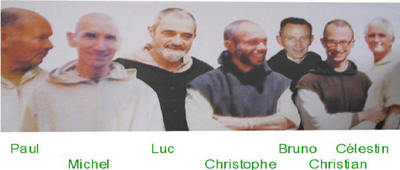 The
The
recent Cannes Film Festival showed the film about the 1996 Trappist martyrs of Our Lady of
Atlas in Algeria. The film got rave reviews and awarded 2nd place. The film is in French and it will be
available on DVD with English subtitles. While we wait for the full film to be available here is
a clip on Youtube with subtitles at: Of Gods and Men.
